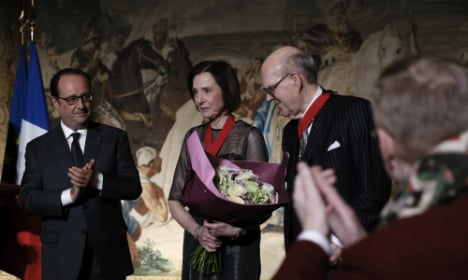Businessman Spencer Hays and his wife Marlene were in the city Saturday to formalise the first instalment of their donation — 187 works including pieces by Edgar Degas and Amedeo Modigliani worth around 173 million euros ($188 million) — to the Musee d'Orsay.
“When Marlene and I grew up in a little town in Gainesville, Texas, even visiting France was far beyond our great expectations. But in 1971 we made our first trip to Paris, and our love affair with this wonderful country began,”
Hays told a crowd which included President Francois Hollande at the Elysee Palace.
“After our death, our collection will be gifted to the French people for the benefit of art lovers around the world. But, even more important to us, this collection is our legacy,” he added.
The couple, who are both aged 80 and have been married for 60 years, have a collection of some 600 works from the late 19th and early 20th centuries worth 350 million euros — and it continues to grow.
“The people who know you know your collection gets bigger around July 14 and December 7, because those are your birthdays. And this year, once again, Marlene, you gave Spencer a Matisse, and you, Spencer, gave Marlene a Modigliani… It wasn't easy to live up to that!” Hollande said.
The President added that the couple had given France not only their collection but also “access to culture for everyone”.
“Your act, your donation, honours the French Republic,” he said during a ceremony in which the couple received the distinction of commander of the Legion d'Honneur, one of the country's highest honours.



 Please whitelist us to continue reading.
Please whitelist us to continue reading.